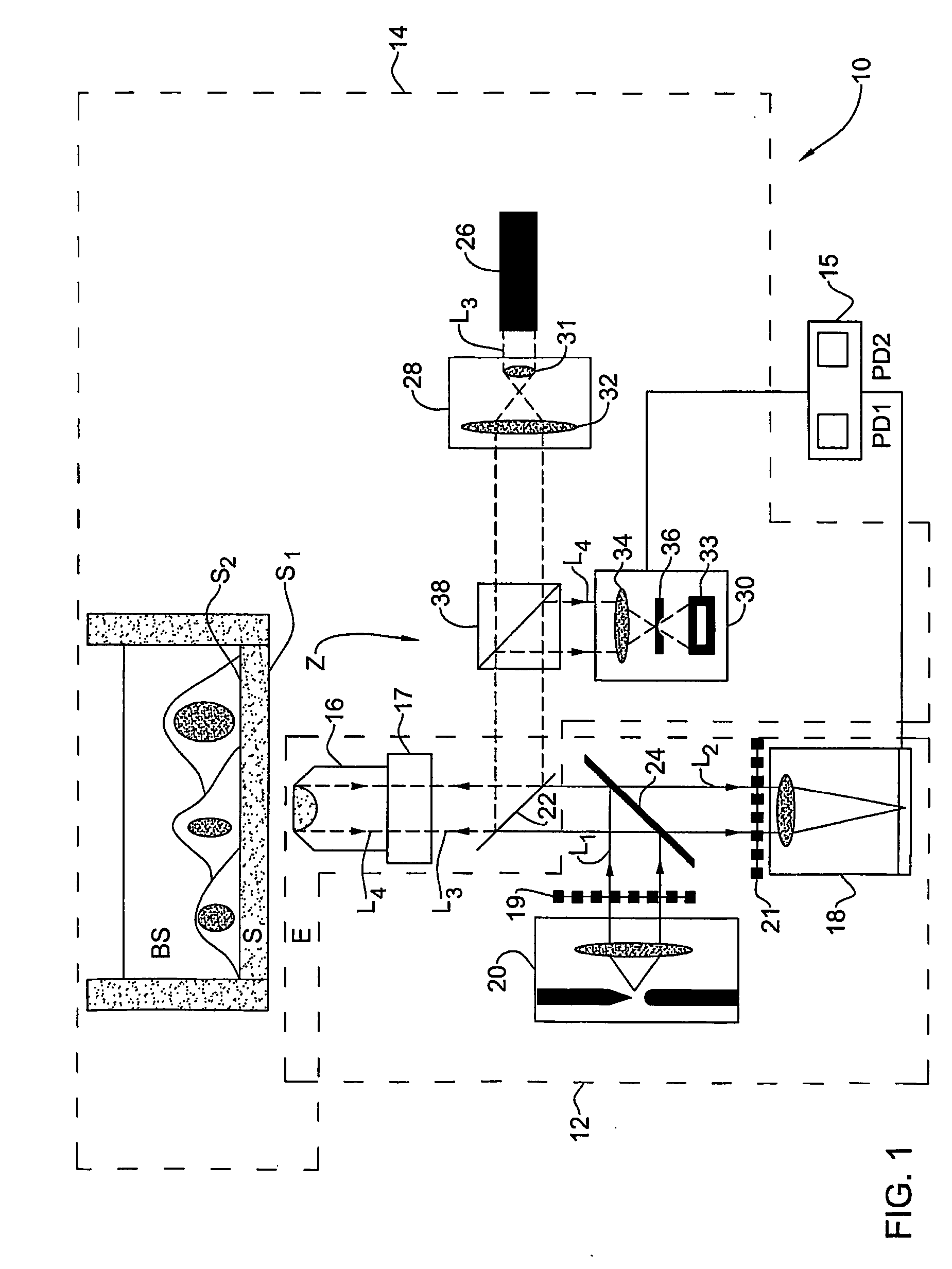Auto-focusing method and device
a technology of auto-focusing and optical measurement, applied in the direction of optical elements, fluorescence/phosphorescence, instruments, etc., can solve the problems of not preserving intensities, difficult implementation, and not applicable to quantitative fluorescence microscopy applications, and achieve fast auto-focusing techniques, easy identification, and the effect of avoiding bleaching or photo-damage of samples
- Summary
- Abstract
- Description
- Claims
- Application Information
AI Technical Summary
Benefits of technology
Problems solved by technology
Method used
Image
Examples
Embodiment Construction
[0062] Referring to FIG. 1, there is illustrated an imaging system 10 for acquiring images of a sample, a biological sample BS in the present example. The system comprises such main constructional parts as an imaging device 12 and an auto-focusing device 14 associated with a control unit 15 connectable to the elements of the auto-focusing and imaging devices, as will be described more specifically further below. As shown, the biological sample BS (typically a sample chamber including a buffer layer in which cells are grown) is located on the surface S2 of a substrate S (glass / plastic slide). The system 10 is located at the opposite surface S1 of the substrate. The substrate is supported on a stage (not shown) movable in a plane perpendicular to the Z-axis.
[0063] The control unit 15 comprises a processing utility PD1 operable to process data coming from the auto-focusing device 14 to generate a focusing signal indicative of the in-focus position of the sample-carrying surface for ac...
PUM
| Property | Measurement | Unit |
|---|---|---|
| height | aaaaa | aaaaa |
| transparent | aaaaa | aaaaa |
| semi-transparent | aaaaa | aaaaa |
Abstract
Description
Claims
Application Information
 Login to View More
Login to View More - R&D
- Intellectual Property
- Life Sciences
- Materials
- Tech Scout
- Unparalleled Data Quality
- Higher Quality Content
- 60% Fewer Hallucinations
Browse by: Latest US Patents, China's latest patents, Technical Efficacy Thesaurus, Application Domain, Technology Topic, Popular Technical Reports.
© 2025 PatSnap. All rights reserved.Legal|Privacy policy|Modern Slavery Act Transparency Statement|Sitemap|About US| Contact US: help@patsnap.com



